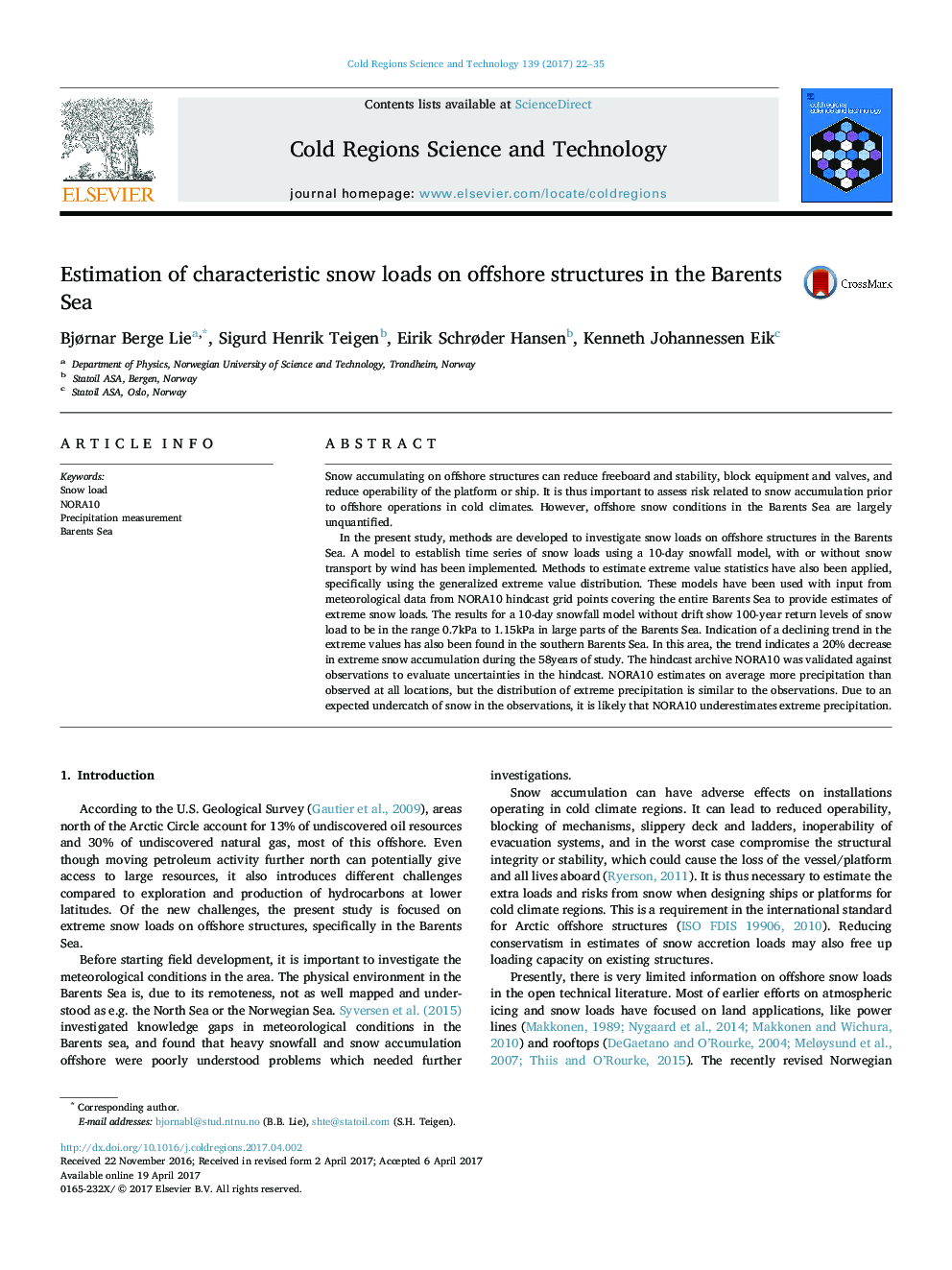| Article ID | Journal | Published Year | Pages | File Type |
|---|---|---|---|---|
| 5779424 | Cold Regions Science and Technology | 2017 | 14 Pages |
Abstract
In the present study, methods are developed to investigate snow loads on offshore structures in the Barents Sea. A model to establish time series of snow loads using a 10-day snowfall model, with or without snow transport by wind has been implemented. Methods to estimate extreme value statistics have also been applied, specifically using the generalized extreme value distribution. These models have been used with input from meteorological data from NORA10 hindcast grid points covering the entire Barents Sea to provide estimates of extreme snow loads. The results for a 10-day snowfall model without drift show 100-year return levels of snow load to be in the range 0.7kPa to 1.15kPa in large parts of the Barents Sea. Indication of a declining trend in the extreme values has also been found in the southern Barents Sea. In this area, the trend indicates a 20% decrease in extreme snow accumulation during the 58years of study. The hindcast archive NORA10 was validated against observations to evaluate uncertainties in the hindcast. NORA10 estimates on average more precipitation than observed at all locations, but the distribution of extreme precipitation is similar to the observations. Due to an expected undercatch of snow in the observations, it is likely that NORA10 underestimates extreme precipitation.
Related Topics
Physical Sciences and Engineering
Earth and Planetary Sciences
Earth and Planetary Sciences (General)
Authors
Bjørnar Berge Lie, Sigurd Henrik Teigen, Eirik Schrøder Hansen, Kenneth Johannessen Eik,
